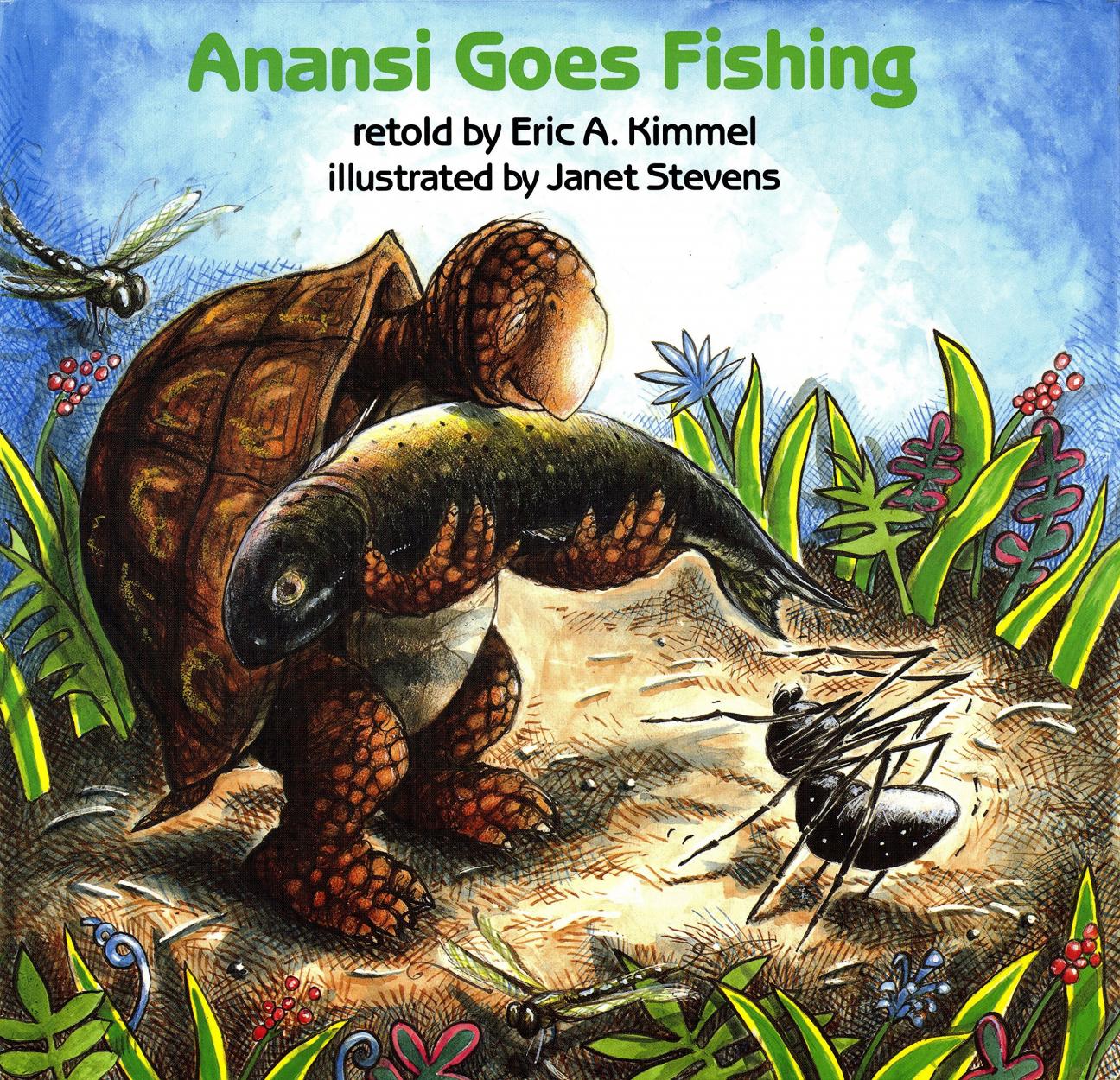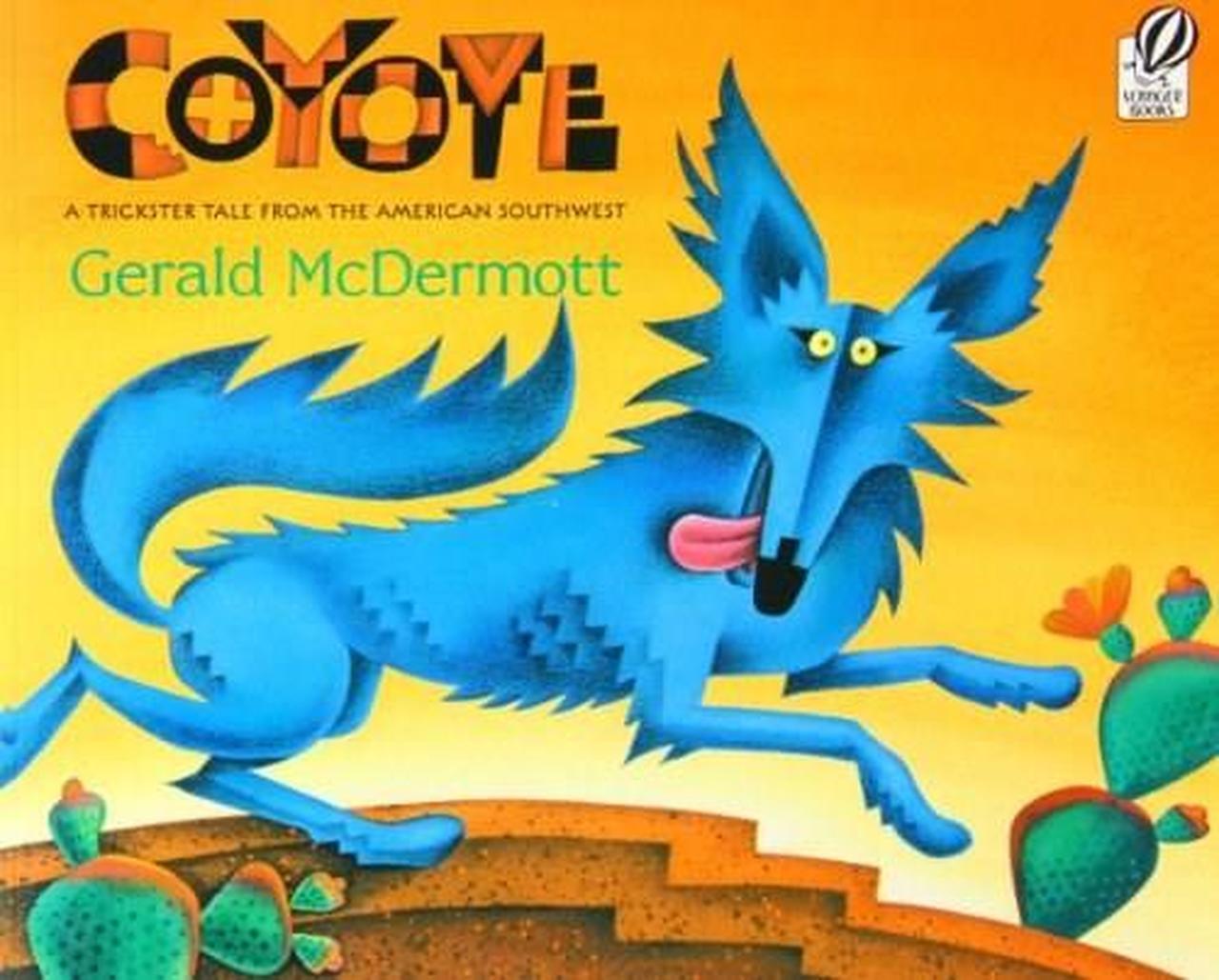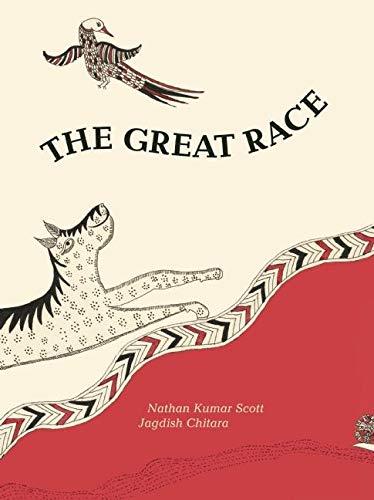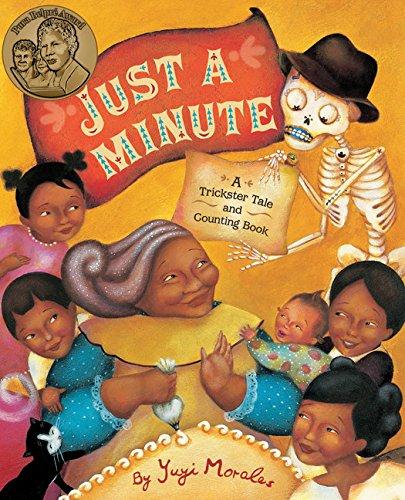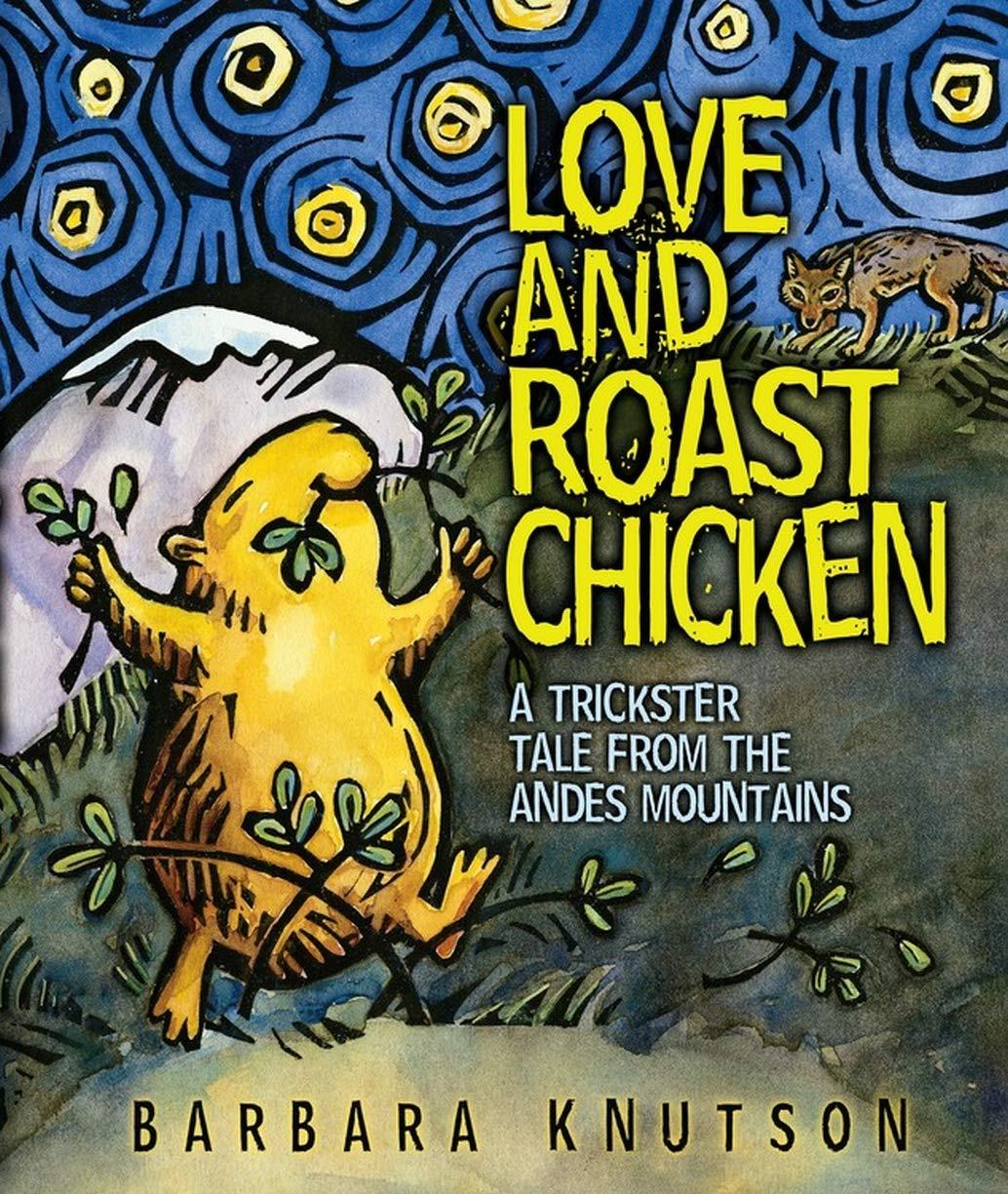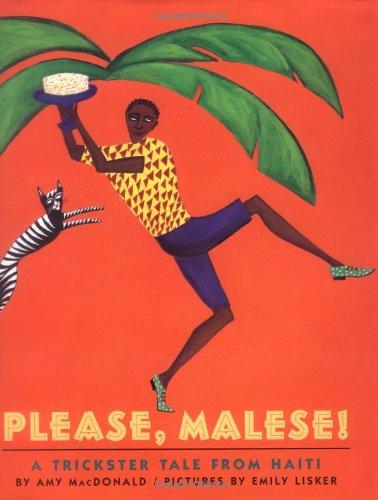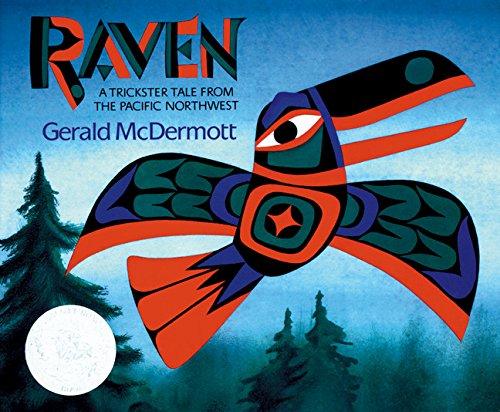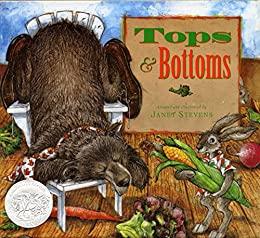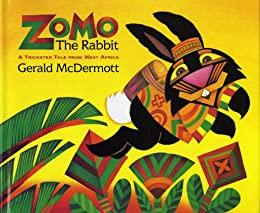Trickster tales are common to cultures all around the world - but what are they exactly? In the stories, tricksters are an animal/person/god who gets what they want by outwitting the other characters. Sometimes the books explain how things came to be - like the tale about Raven bringing the sun to indigenous people (akin to some tall tales). Other times, the trickster is just serving their own ends, which don't always work out so well. A lot of times, the character getting tricked is lazy or mean, and so the trickster is justified in their actions. There is definitely morality in the tales, but whether the trickster or the other characters are the moral ones changes with each story. Nevertheless, cleverness is certainly a prized quality in the tales. Below are some trickster tales from our collection:
Anansi - There are a lot of Anansi tales, but he can be a problematic trickster because he is lazy and wants to trick other creatures into doing the work for him (or trick them into letting him steal food). Thankfully there are quite a few stories where Anansi is outwitted by other animals and gets his comeuppance. Eric A. Kimmel has adapted quite a few Anansi tales which feature the spider getting outwitted by other animals. One of these, Anansi Goes Fishing, winds up explaining why spiders spin webs.
Coyote by Gerald McDermott - This is a trickster tale from the American Southwest. In this story, Coyote sees a bunch of crows up on a mesa, and wants to be like them. He asks if he can join (and fly), so the crows decide to have some fun with him. They all pluck a feather from their left wing, stick it in him, and he falls. Then they all pluck a feather from their right wing. Coyote's pride overtakes him and the crows don't think it's amusing anymore. When they go for another flight, they all pluck their feathers from him, and Coyote falls. The end basically explains how coyotes got their coloring. Reading through this though, I wonder if it is supposed to be a story about cultural appropriation. The crows are accepting (to a degree) when Coyote wants to try to be like them. However, when he starts getting boastful and saying he's "perfect" is when they take back what's theirs. It could be a good starting place for talking about respect for other cultures.
The Great Race by Nathan Kumar Scott - this is an Indonesian trickster tale that is very similar to the Tortoise and the Hare. Have you seen The Prestige? The ending is like that (spoiler for the movie if you haven't). Basically a mouse deer challenges anyone who will accept to a race. The only one to accept is a snail, and he and his twin brother station themselves at either end of the race course, making it look like the snail is super fast. How they knew what the mouse deer was going to set as a race course, I have no idea - I guess the author is relying of suspension of disbelief. So they succeed in their trick and the mouse deer loses the race - to a snail. I suppose the lesson is about pride and arrogance being a downfall.
Just A Minute by Yuyi Morales - This is an adaptation of a traditional (Mexican?) tale, where Senor Calavera (death) comes to take Grandma Beetle into the afterlife. The problem is, grandma is planning a birthday party, so she keeps asking him for "just a minute" more. She makes all the preparations, and then Senor Calavera gets to stay and celebrate as a special guest. He enjoys it so much, he extends her lease on life for another year (and presumably more after that). Is there a moral to this one? Ehhhh... You can argue that cleverness, hard work, family, (and a bit of kindness) are shown essential to leading a long life, I guess? Bonus - this is a counting book, and it does count in English and Spanish.
Love and Roast Chicken by Barbara Knutson - this one is inspired by stories from Peru/Bolivia, learned when the author was living in the area. In this one, a little guinea pig gets out of being eaten by a fox twice by convincing the fox it's the end of the world. This book is great because everyone gets fooled at one point. The guinea pig fools the farmer into hiring him, and then he eats all his crops at night. The farmer fools the guinea pig with a sticky clay statue, in an attempt to catch the creature eating all his crops. Then the guinea pig fools the fox *one last time* to get out of being the farmer's dinner the next day. While the fox is the worst off in the end, at least no one gets away blameless.
Please, Malese! by Amy MacDonald - This is a trickster tale from Haiti. In this one, Malese is lazy and poor and tricks all his neighbors into giving him stuff for free and fixing his house. The issue? There is never blowback from this. He tricks them multiple times and then gets off better than he was and that's where the book ends. It's fun to read and to admire how clever he is being, but perhaps there needs to be some discussion after reading this one. Perhaps you can talk about what your children think should happen to him and talk about consequences of actions?
The Raven by Gerald McDermott - This is a trickster tale from the Pacific Northwest. The Raven is fantastic because it tells the story of how Raven gave people the sun. He visits Sky Chief's house, sees his daughter drinking outside and turns himself into a pine needle, which she drinks. She gives birth to him, and now as a child he sets about exploring the house trying to find the light. Once the sun is found, he steals it, turns back into a bird, flies off, and puts the sun in the sky. You might have some questions about where babies come from, but on the whole I like it as a trickster tale because there is a positive reason/outcome for the trickery.
Tops & Bottoms by Janet Stevens - There are quite a few old trickster tales that are about slaves outwitting their masters. This book is a version of one of those stories, using a character often seen as a trickster figure in America, the rabbit. Rabbit is poor and has a big family to feed, and his neighbor the bear has a large plot of land and is very lazy. Each time, Rabbit makes a deal with Bear to share part of the harvest, but then plants the right crops to get the best part of the deal. So Rabbit makes a deal for him to get the bottoms and Bear to get the tops, and then he plants carrots, potatoes, etc. Rabbit, the clever hard worker makes out best in every deal and ends up the winner in the end. The moral of this one, of course, is that there aren't shortcuts to get what you want. You have to be willing to put in the hard work.
Zomo the Rabbit by Gerald McDermott - Yes, another by McDermott - I really like the stories and illustrations that are made to match the culture they're from. They're fairly short, so they're good for use in story time. This is a trickster tale from West Africa. In this story, Zomo goes to Sky God and asks for wisdom. So Sky God tells Zomo to get scales from Big Fish, milk from Strong Cow, and a tooth from Leopard. Zomo completes all these things, but makes all the animals he tricked very angry. So Sky God gives him wisdom and tells him he must run. This is an interesting tale because you can discuss what would have happened if Zomo had simply asked the animals for those things. The fact that he felt the need to trick/embarrass/harm other animals to meet his own ends makes for a good talking point too.
Originally Posted by StephanieT on July 28, 2020
